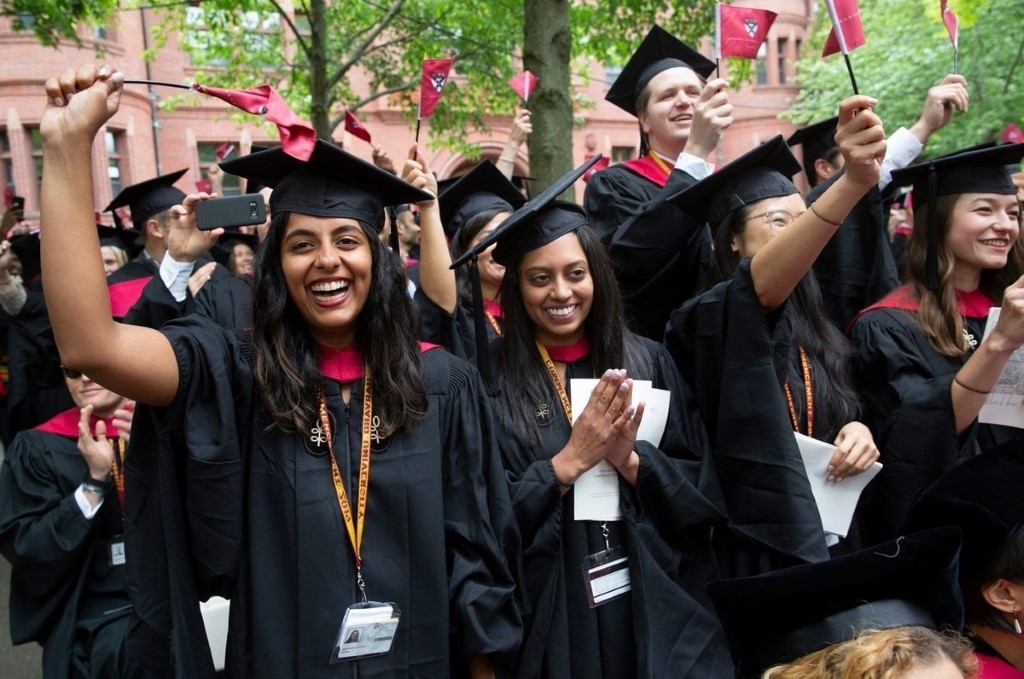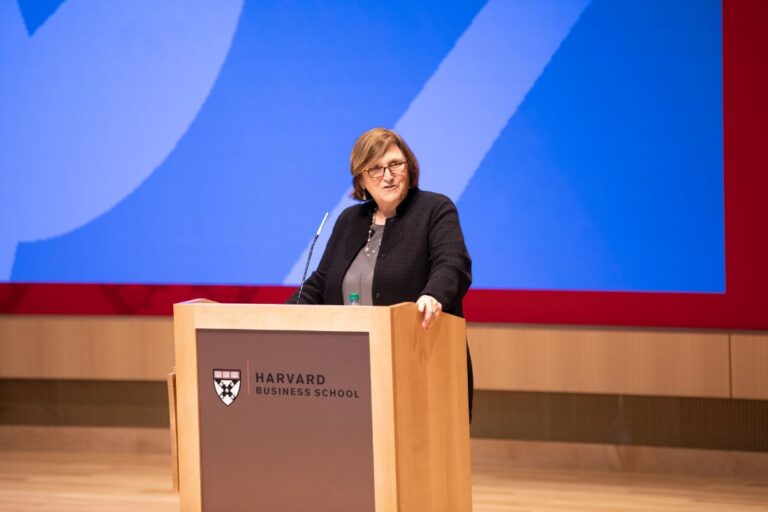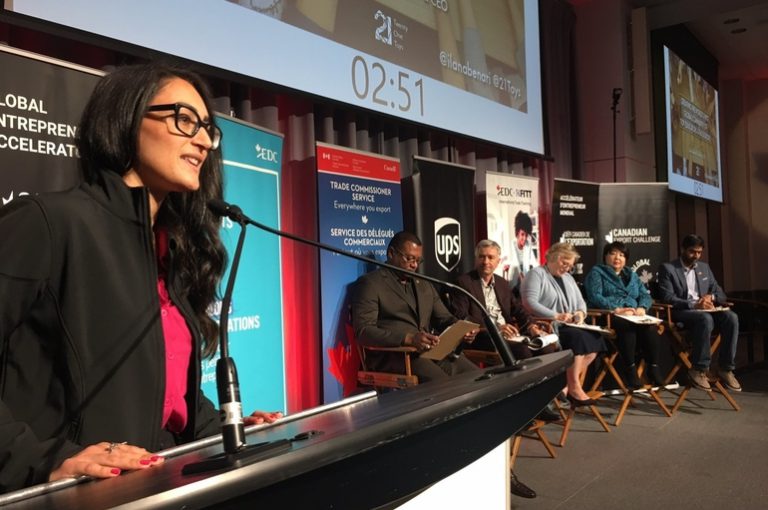Harvard University: Top Runner in the School-Branding Race
It is no question that Harvard is considered one of the most prestigious universities in the world. Many of the greatest minds have come out of this 400-year-old institution, such as Bill Gates, Barack Obama, Mark Zuckerberg and so on. From presidents to business leaders to top-tier entertainers, the school’s graduates have racked up some incredible accomplishments.
Its achievements in education is indisputable, but have you ever wondered how rich Harvard can be as well? How does it get such huge amount of budget? And generally, is it worth the “hype”? There are a lot of articles about the academic rankings of Harvard, but only a few have been written about its marketing strategies. This article will break it down for you by providing some useful information about Harvard.
Facts That You Might Be Missing Out on Harvard
#1. There Was Harvard Before There Was United States
Established in 1636, Harvard is the oldest institution of higher education in the United States. It was named after the College’s first benefactor, the young minister John Harvard of Charlestown, who upon his death in 1638 left his library and half his estate to the institution. A statue of John Harvard stands today in front of University Hall in Harvard Yard, and is perhaps the University’s best-known landmark.
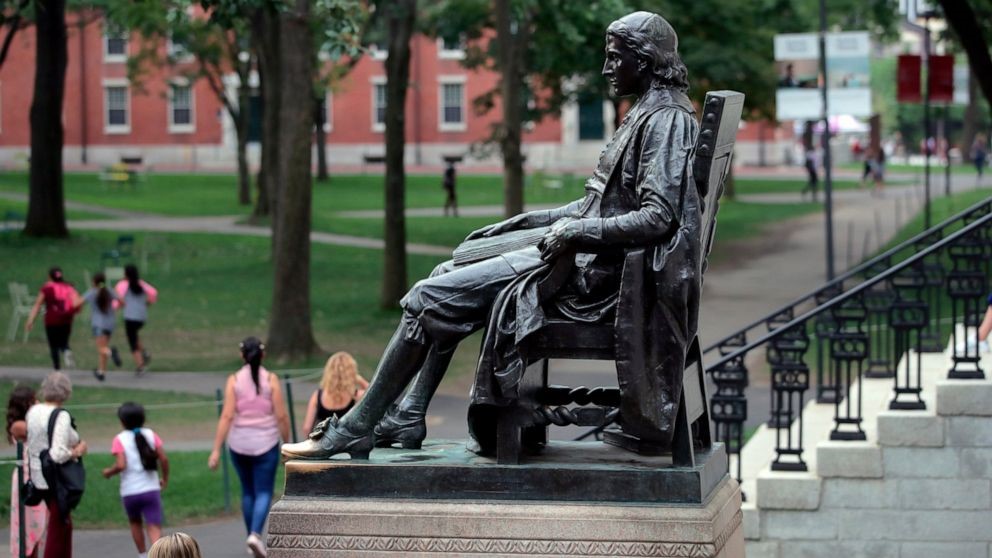
When Harvard was founded in 1636, New England was a tiny, remote settlement whose inhabitants struggled against the long, harsh winters and the constant threat of death by disease or war. This was the New England of King Philip’s War and the Salem witch trials. At that time, the university in Bologna or Salamanca was vastly larger, safer, richer, and closer to the center of European intellectual life. In the entire 17th century, a mere 439 students graduated from Harvard.
The University has grown from 9 students with a single master to an enrollment of more than 20,000 degree candidates including undergraduate, graduate, and professional students. There are more than 360,000 living alumni in the US and over 190 other countries. Harvard is devoted to excellence in teaching, learning, and research, and to developing leaders in many disciplines who make a difference globally. Harvard faculty are engaged with teaching and research to push the boundaries of human knowledge. It has 12 degree-granting Schools in addition to the Radcliffe Institute for Advanced Study.
#2. Harvard Is Wealthier Than Half of the Countries Worldwide
Harvard’s endowment is greater than the gross domestic products (GDP) of 90 countries. Under financial guru Jack Meyer’s management, the school’s endowment grew from $4.6 billion to $25.8 in 15 years. Recently, the school possesses over $40.9 billion and its fortune is still growing.
Harvard’s diversified revenue portfolio relies on 3 main sources of revenue: education or tuition, sponsored research, and philanthropy. Revenue generated each year from tuition and sponsored research is not sufficient to fund its operations and as such, the University relies on philanthropy to fill in the gap. In fiscal year 2019, donors supported 43% of revenue through their generosity and belief in the broad impact of education and research at Harvard.
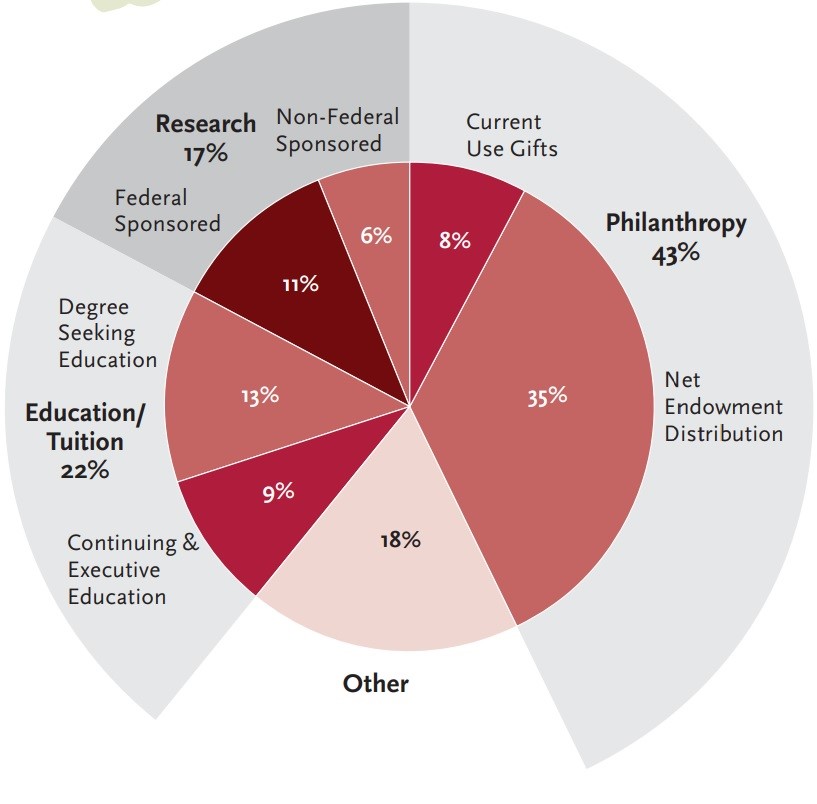
While there is no replacing the role of the federal government as the leading source of basic research funding, Harvard is increasingly diversifying its sponsored research funding through strong partnerships with non-federal sources. The diversification is increasingly important not just as a funding source, but also as a way to collaborate with foundations and industry partners to translate discoveries into new technologies, treatments, and therapies.
The University has taken several steps in recent years to prepare for the end of the current economic expansion, including reducing debt levels, increasing cash holdings, and strengthening reserves. Schools and units annually prepare rolling five-year financial plans and are including “downside” scenarios as part of each year’s exercise.
Money Matters: The Making of Harvard’s Wealthiness
#1. Matthew Effect: “The Rich Get Richer”
As you might have heard, the Matthew Effect is social phenomenon linked to the idea that “the rich get richer, the poor get poorer.” In this case, if you are a top student or professor or donor looking for the “best,” you tend to choose what is already perceived as the best. This reinforces the differentiation: the rich get richer because they attract more resources and attention.
Having explicit rankings only exacerbates this pattern, because its short-cuts the hard work it takes to evaluate each school on its own merits. Hence, people just keep track of the “top” schools, especially outside the US, because we have neither the time nor the interest to reassess every single US school on its own merits. Breaking this cycle requires some sort of disruption to draw attention to other schools with lower visibility.
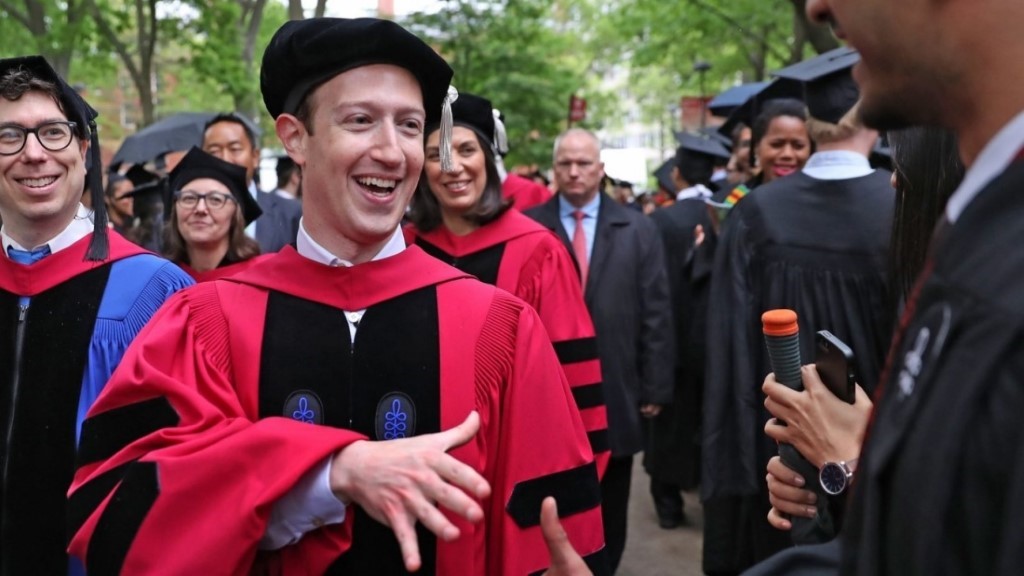
Basically, here’s how the cycle works:
- Donor contributions to the endowment have enabled leading financial aid programs, groundbreaking discoveries in scientific research, and hundreds of professorships across a wide range of academic fields.
- A big use of the endowment money is to generate more money through investment. Even the sciences can bring in money, and not just through patents and such which are likely a rather small fraction. With NIH, DARPA grants, universities take rather large portions of the grants as overhead.
- The reputation grows and its name keeps attracting excellent students. These students then donate back. And we are not talking just undergraduates, but also Business school, Law school, and Medical school which all produce rich alumni.
Harvard’s endowment is a dedicated and permanent source of support for the University and its mission of teaching and research, in the present and forever. The aggregate endowment is made up of more than 13,000 individual endowments created over the last 380 years, which support faculty and students, including professorships and financial aid for undergraduates, graduate fellowships, and student life and activities.
#2. What Harvard Does with Its Huge Endowment
The wisest thing Harvard can do with its financial resources is to allocate them to maximize excellence in its teaching, research, and scholarship. This is ideally an act of everyday stewardship as times and priorities continuously evolve and developing the habit of reallocating resources is a successful evolutionary strategy in all economic conditions. In preparing for the next recession, its schools and units will need to focus on academic and research priorities where continuing and increased investment is essential, but also focus on activities where there may be opportunities to limit or reduce scale or scope.
In fiscal year 2019, the return on the endowment was 6.5% and its value (after the net impact of distributions from the endowment for operations, federal taxes, and the addition of new gifts to the endowment during the year) increased from $39.2 billion at the end of fiscal year 2018 to $40.9 billion at the end of fiscal year 2019.
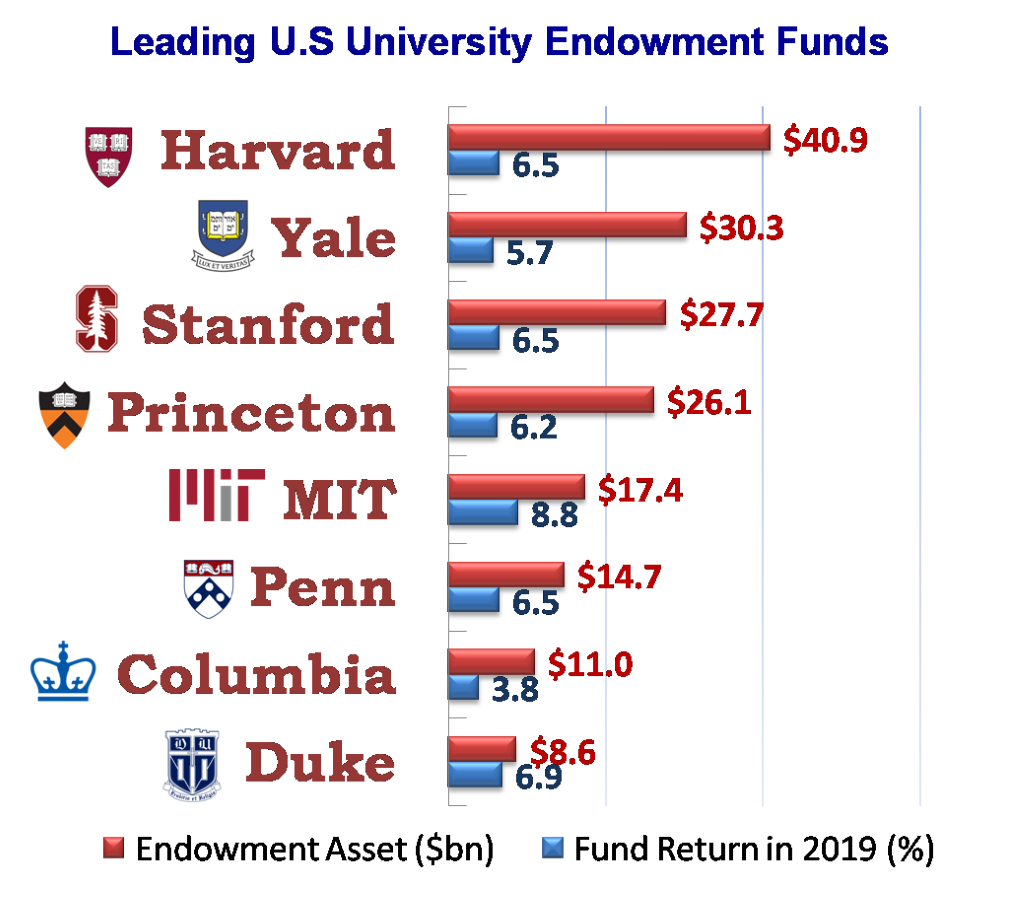
Each year, a portion of the endowment is paid out as an annual distribution to support the University’s annual operations. Any appreciation in excess of this annual distribution is retained in the endowment so it can grow and support future generations. As a result, the endowment can provide the financial foundation for the University for generations to come.
The University’s endowment spending practice must balance 2 competing goals: the need to fund the operating budget with a stable and predictable distribution, and the obligation to maintain the long-term value of the endowment. There is a common misconception that endowments, including Harvard’s, can be accessed like bank accounts, used for anything at any time as long as funds are available. In reality, Harvard’s flexibility in spending from the endowment is limited by the fact that it is designed to last forever, which is crucial for an institution intended to serve generations of students and pursue research on big questions—questions that cannot be answered in one lifetime.
Branding Is an Endless Balancing Act, Even in Education Field
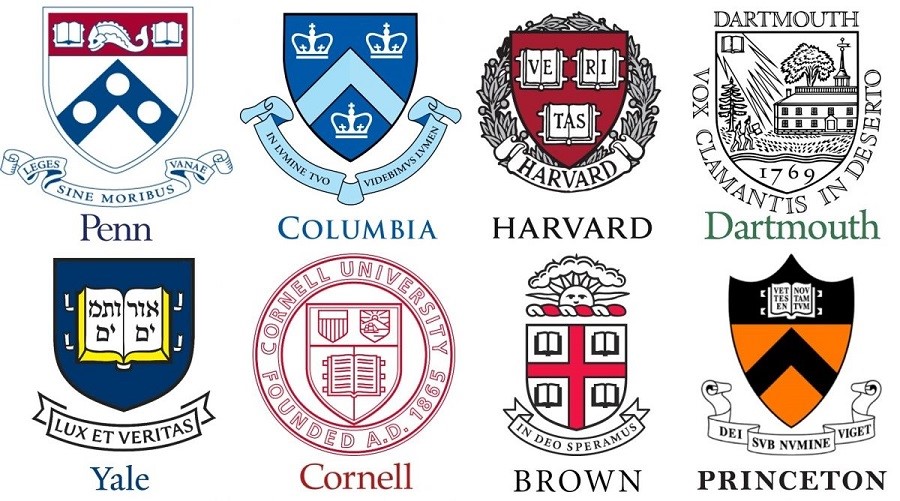
#1. Why Colleges go Crazy about Branding!
Beside reputation and academic quality, marketing strategies also add up to the appeal of an institution. That’s where “branding” finds its way to the education field. Traditionally, universities and colleges have not been staffed by professional marketers. But due to increasing competition for funding and the proliferation of school choices, colleges have been turning to branding and marketing as a tool to compete more effectively and drive enrollment and donations.
In the higher education arena, college branding efforts began to emerge and proliferate around 2000s. Many of these programs involved hundreds of thousands of dollars, multi-faceted “stakeholder” market research, new names, logos and taglines.
- After Beaver College (located near Philadelphia, PA) became Arcadia University in 2002, student applications doubled by 2006.
- The University of Maryland likes to tout how its “Fear the Turtle” campaign resulted in increased alumni contributions, more applications, higher quality students and a better ranking.
- Columbia College of Chicago has built a whole campaign around a focused positioning.
Note that most institutional branding efforts still focus mainly on the external aspects of branding and not on organizational change and the holistic college experience. An impetus behind many of these branding initiatives for colleges big and small is an acknowledgement that applicants have so many choices and not every institution is a “Harvard”. The premise is: Harvard would not need to brand itself because after all, it is Harvard, it can just stand on its name. Unions, faculty independence, bureaucracy and lack of sophistication are reasons that traditional branding (logo) versus the newer age model (stakeholder beliefs and customer experience) is more entrenched.
#2. Harvard Is Far Ahead in the Branding Race
Brand recognition is obviously not an issue for Harvard. In fact, what mostly matters is that people often perceive this 400-year-old university as a stuffy, arrogant, blue-blood playground. Back in 2008 when Harvard Business School (HBS) hired Brian Kenny to be its first Chief Marketing & Communications Officer (CMO), his responsibility was to give people accurate perceptions of what the school is like, the work that they’re doing and how it’s different from some of the other top schools.
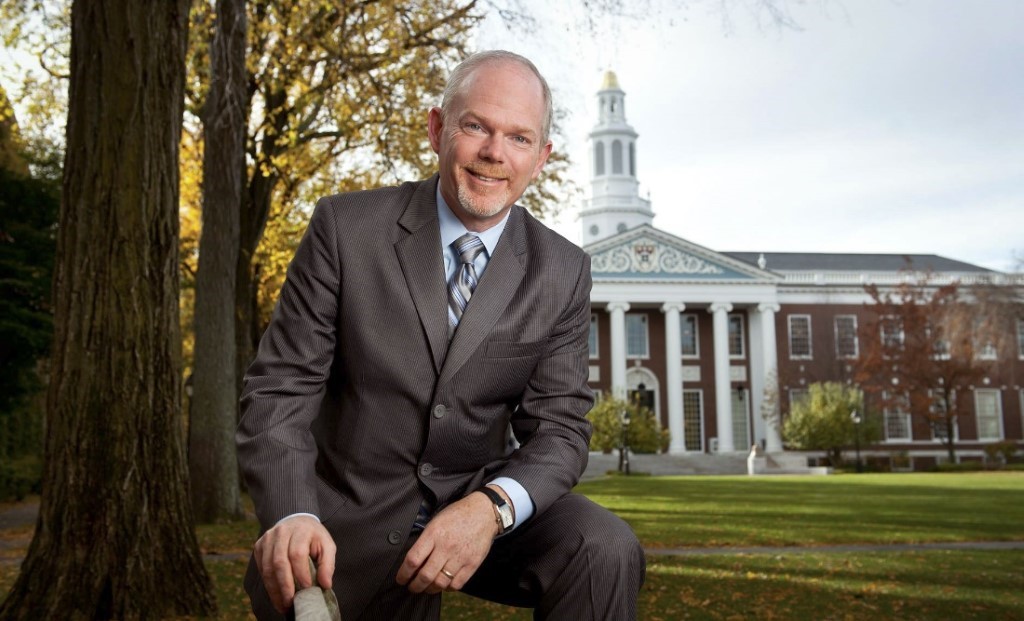
“I grew up in this area and always thought of Harvard as this elitist place, and I thought I’d encounter a lot of arrogance and sharp elbows. But it is a complete opposite of that, and you don’t really realize that until you get here and you start to talk to people. All of those misconceptions fade away very quickly” – said Kenny. If you don’t manage your school’s reputation, your community will do it for you. And once we allow others to tell our story for us, we are doing ourselves a disservice. Brian Kenny joined HBS and helped them tell the right story to alumni and prospective students.
Nevertheless, Harvard University continues to spend heavily on marketing and branding efforts. In 2019 alone, tax filings indicate that Harvard spent over $38 million on advertising. To give you some perspective, this is enough to buy seven 30-second primetime spots on the Super Bowl broadcast.
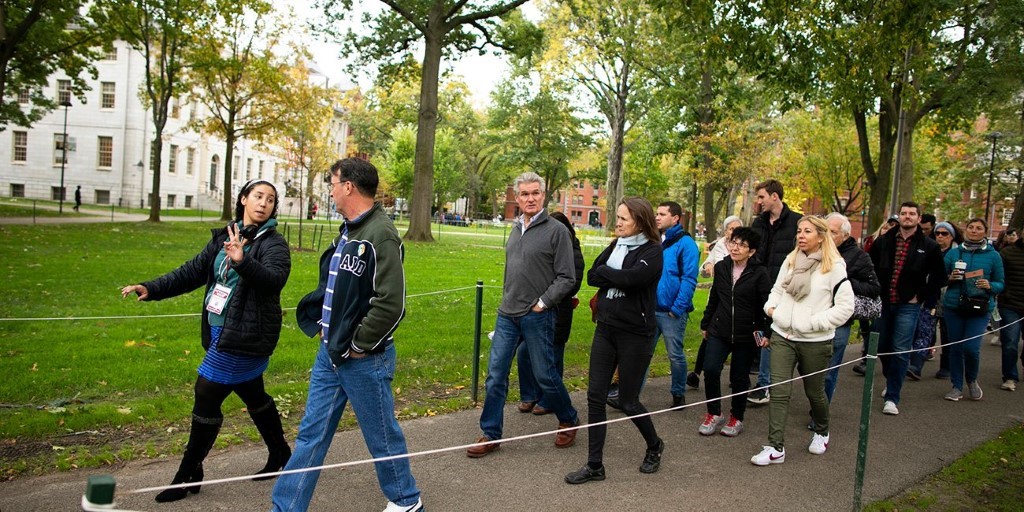
While the Harvard brand may be exceedingly powerful, it still has to cope with a continuously shifting market of college students. It has to reposition popular classes, promote less-emphasized programs and appeal to fresh student demographics. With the exception of a handful of pioneers like Harvard, most colleges have yet to warm up to school branding. They have traditionally focused mostly on curriculum and student outcomes. But due to increasing competition and decreasing college-aged populations, they are all starting to make the strongest possible case for themselves. College branding has moved at a faster pace than K-12 schools and offers an abundance of enrollment strategies and marketing best practices to ‘steal’ from.
The Race of Competing for Attention in Education Sector
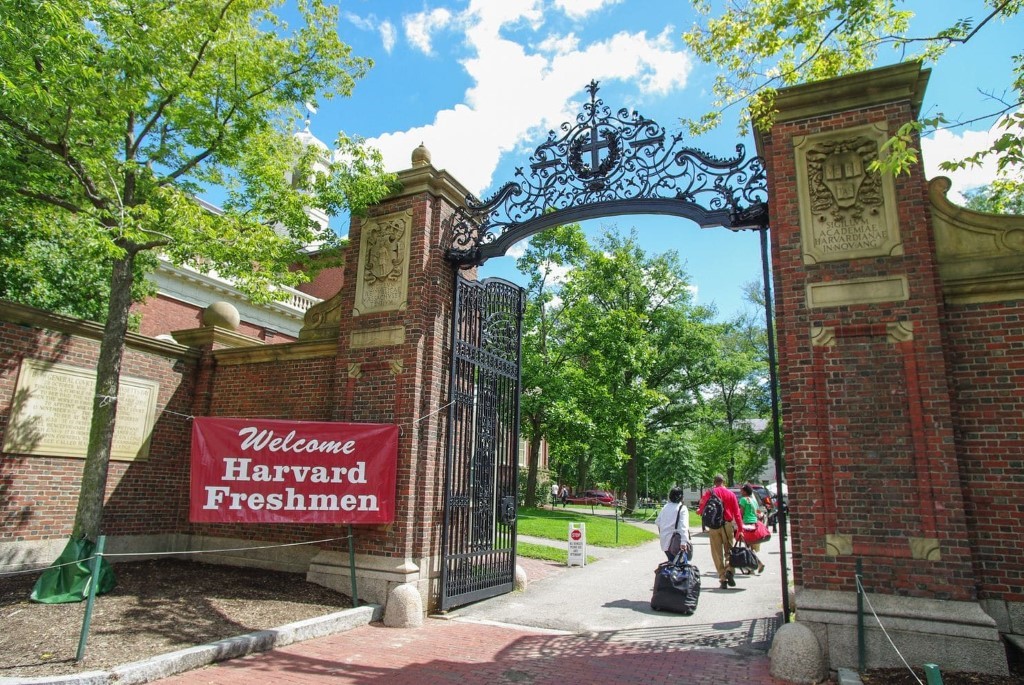
#1. Differences from Marketing in Professional Environment
There are lots of fundamentals in mutual. However, marketing in an academic setting could be a bit more challenging than that in a professional environment or a product marketing environment. There are many different kinds of stakeholders — alumni, students, faculty, staff and in this case, the business world in general — and they’re all expecting to hear something slightly different from you. So, it makes you use a lot more muscles than you’d have to use if you had a very defined target audience and a specific product or service. By virtue of that, it’s more challenging, but it’s also more fun because you get a wider breadth of things to do on a regular basis. You might be dealing with local community relations in the morning and then working on a branding strategy for the school’s mobile footprint in the afternoon.
Be proactive instead of reactive. There is definitely a culture here where we like to experiment and take qualified risks on the things we’re doing. Social media gives you all sorts of avenues to rethink how you’re presenting yourself to the world. “I don’t think we’ll ever feel like we’ve figured it out, because the way it’s changing and evolving makes it hard to do that, but we’ve moved from looking at social media as a broadcast tool to really being a meaningful way to engage and for people to hear about the school” – said Brian Kenny, the first CMO of HBS.
#2. Is Branding the Same as Reputation Management?
According to Jeff Bezos, the founder & CEO of Amazon: “Your brand is what people say when you leave the room.” So, brand and reputation are not synonyms but are certainly tightly linked. Both are shaped by communication, and both seek to improve perceptions. They are slightly different in that branding functions as a multiplier. It generates differentiation and attraction. Reputation, on the other hand, is the sum-total of your school’s track record, your decisions, your outcomes, your actions and statements to date. So, you invest in your school brand to get a return, you protect your reputation to preserve credibility and trust. While the two are similar, you could say that brand is proactive while reputation is defensive. In short, your brand is your promise, and your reputation is how your school delivers against that promise.
#3. How Might Institutions Take Control of Their Reputation?
There are 3 steps suggested on Reputation Management in academia:
Step 1: Parent Discovery Surveys
You have to start by understanding what your parent audience thinks, defining what you want them to think and feel, and then developing a communication system to close that gap.
Step 2: Messaging via the 5P’s
The second step is to break down your school’s brand/reputation into a coherent message:
- Promise: What you say you will do for your audiences
- Position: What differentiates you from your peers
- Personality: How you deliver your education
- Permission What your school should and should not do
- Permanence: The essential attributes of your school’s brand
Remember that your brand message must be overlapping or at least closely tied to your school’s mission, vision and strategy imperatives.
Step 3: Execution
Finally, once you have broken down your brand into its component parts, you have to develop a project execution plan that fits your budget.
In our fast-moving and chaotic world, it matters more than ever that social change-makers, such as educators, learn how to cut through the noise and get other people to pay attention to their causes.
The Bottom Lines
Every higher education institute relies on its reputation in order to ensure its continued success. Ultimately in academia, it is reputation that facilitates student applications, academic acknowledgements, grants, donations and a plethora of other funding streams that keep the day-to-day running of an institution possible.
Typically, for a university, a combination of brand, published research, the REF (Research Excellence Framework), world league table and student survey results collectively contribute towards the reputation of the institute. However, it is not simply enough to rely on brand history, published papers and table positions to communicate a university’s expertise across subjects and departments. As an institution, the expertise of individuals and departments needs to be effectively communicated in order to enhance the profile and brand value both nationally and internationally.

